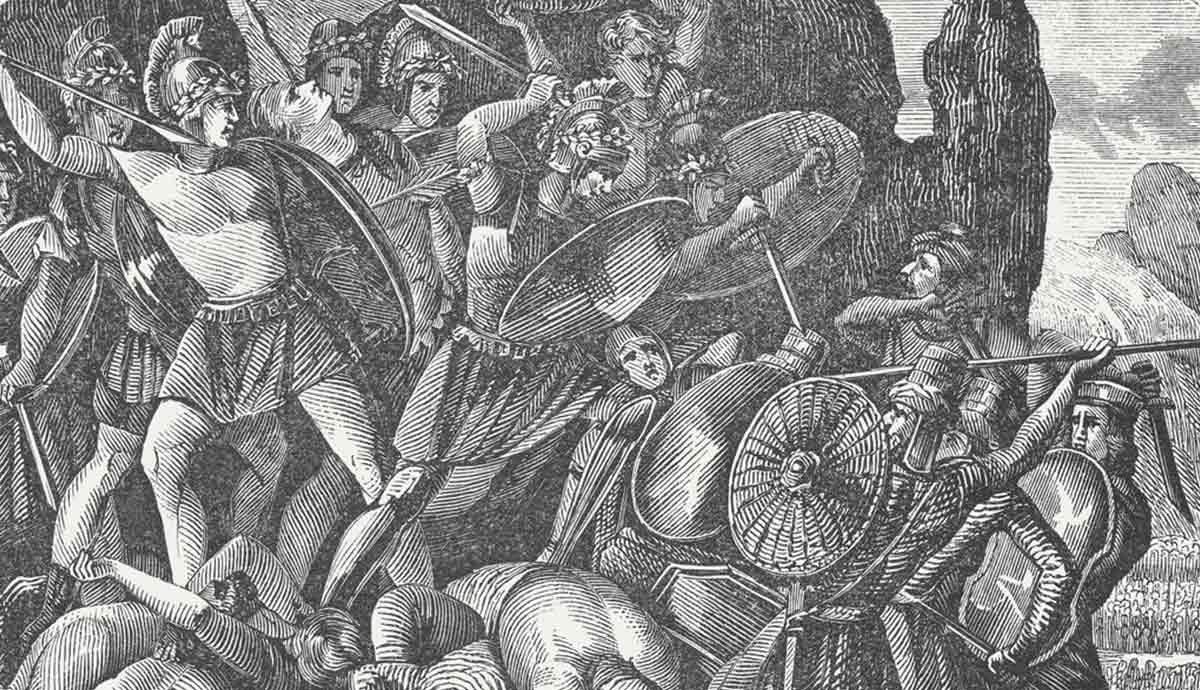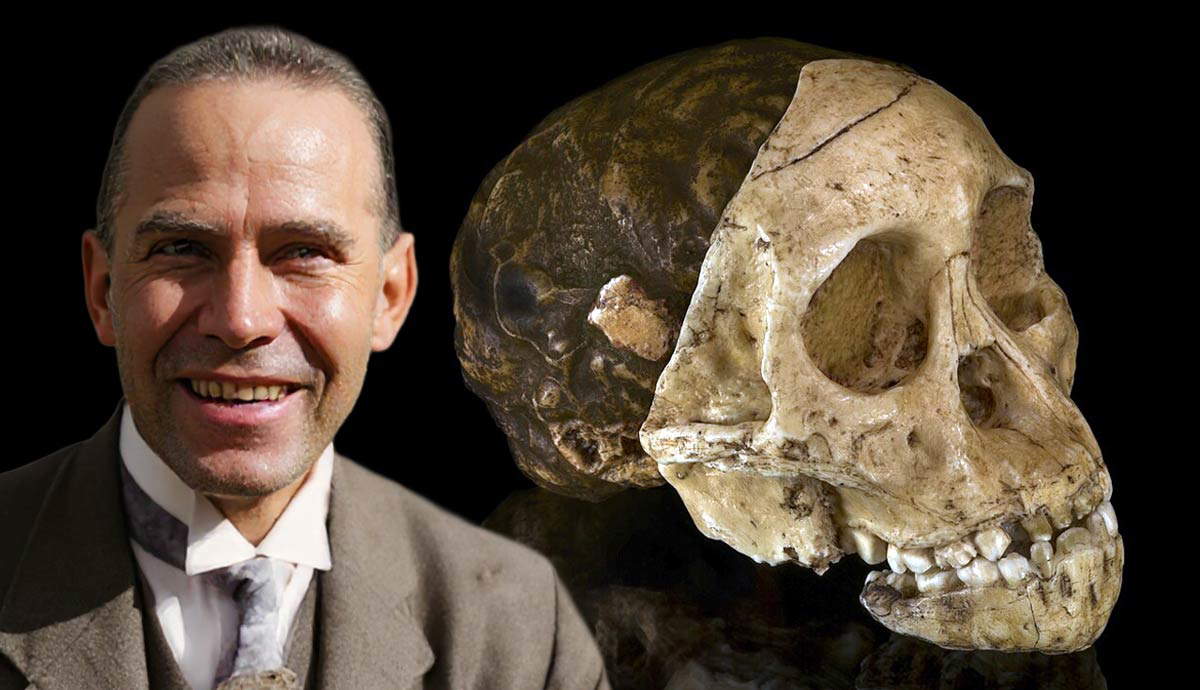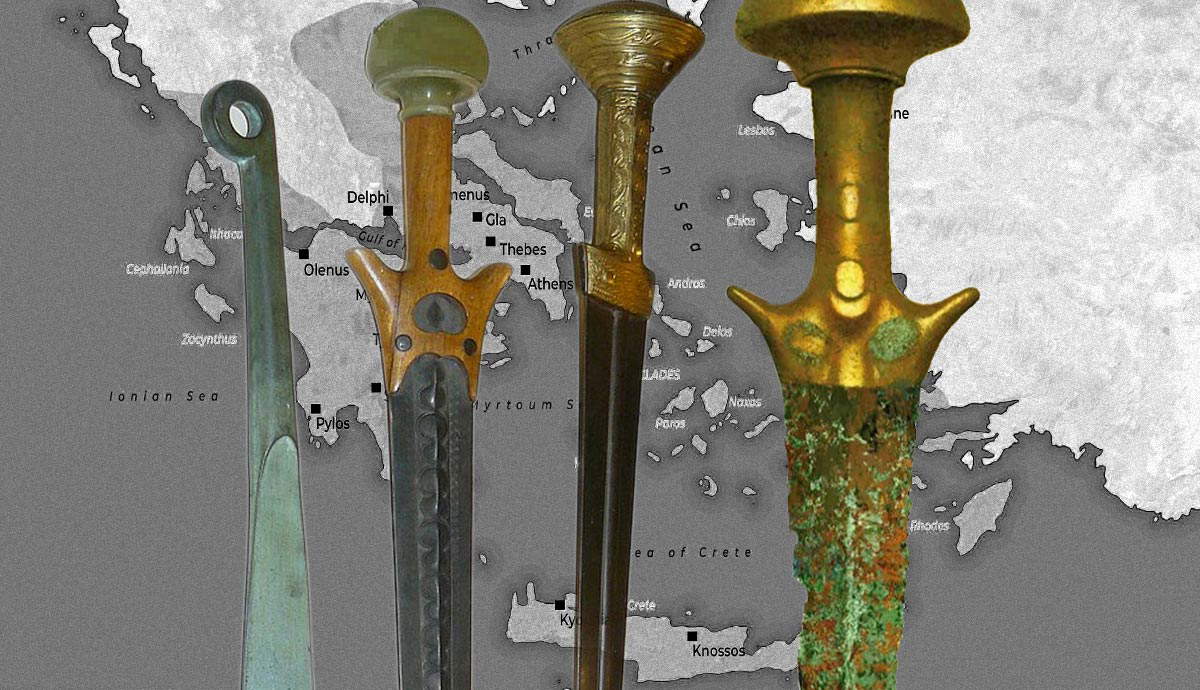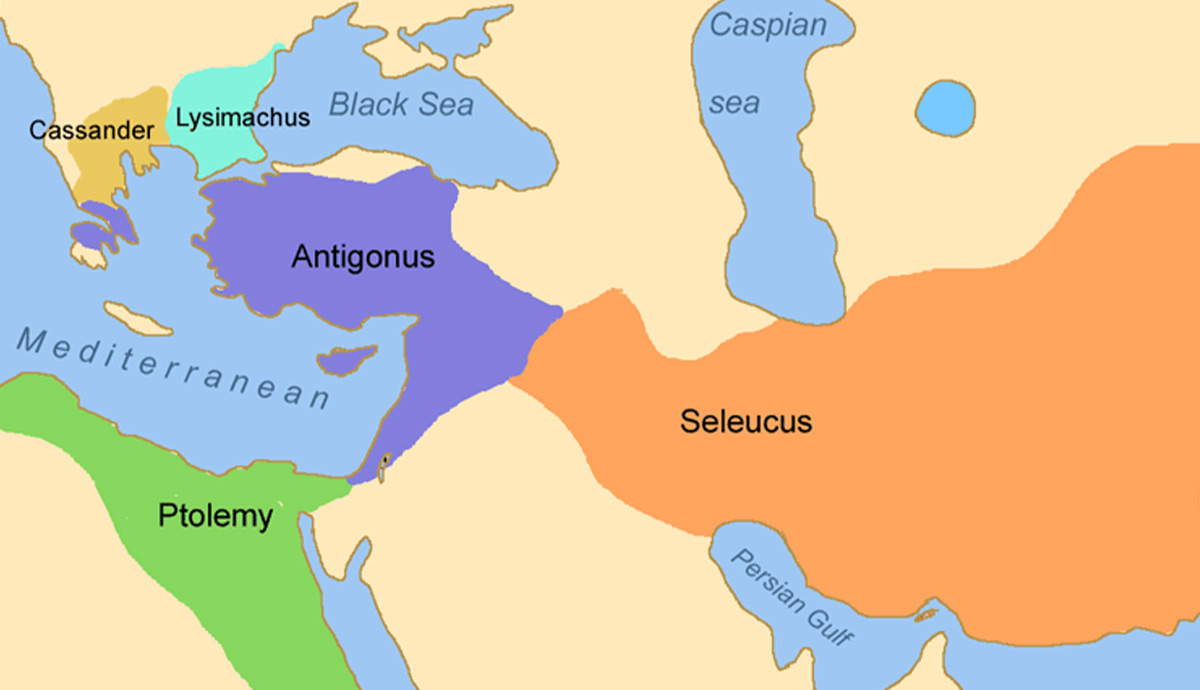
Alexander the Great conquered Persian-controlled Egypt in 332 during his campaigns against the Achaemenid Empire. Upon his death in 323 BCE, Alexander’s territories were split up among his closest companions, the Diadochi. One of his generals, Ptolemy, faced off against other members of the Diadochi. Eventually, he won control of Egypt and declared himself pharaoh.
The rulers of the Ptolemaic dynasty adopted the title of pharaoh and commissioned many public monuments of themselves in an Egyptian style of dress to gain legitimacy and the support of the native Egyptians. In many other regards, the rulers maintained many of their Hellenistic traditions, often at the expense of the Egyptians. The Ptolemies insisted upon the primacy of Greek within their empire while, at the same time, skillfully placing themselves at the center of Egyptian society and religious life to secure their rule. In the next few centuries, Egypt, especially the new capital at Alexandria, became a nexus of Hellenistic culture and emerged as the wealthiest and strongest of Alexander’s successor states.
Rise of the Ptolemaic Dynasty

After Alexander’s death in 323 BCE, a power struggle arose among his seconds-in-command. Ptolemy was appointed satrap of Egypt by Perdiccas, who ruled as regent on behalf of Alexander’s disabled half-brother Philip III of Macedon. As Alexander the Great’s empire crumbled, Ptolemy soon established himself as ruler in his own right, defending Egypt from the advances of Perdiccas and the other generals who were fighting for control over Alexander’s empire. In 305 BCE, Ptolemy emerged victorious, taking the titles of king and pharaoh, and changing his name to Ptolemy I Soter. All males after him took the name Ptolemy and the women (princesses and queens) preferred Cleopatra, Arsinoë, or Berenice.
A revival of Egyptian religious and cultural customs came very early under the Ptolemaic dynasty. Ptolemy I respected these customs even though the early Ptolemies did not really partake in them. During the reign of Ptolemy II, more Egyptian customs were adopted, such as the intermarriage of royal siblings as per the Myth of Osiris. He also began the tradition of participating in Egyptian religious life, such as the building and reconstruction of temples and involvement in the priesthood.
In the mid-3rd century BCE, Egypt was the wealthiest and most powerful of Alexander’s conquered states. About 100 years later, complications surrounding the throne and foreign attacks weakened the kingdom, forcing it to rely more and more upon the Roman Republic. Under Cleopatra VII, who attempted to restore Ptolemaic power, Egypt became engaged in a battle with Rome. Ultimately, this led to the country’s downfall. Egypt became one of Rome’s richest provinces and Alexandria remained of the utmost importance until well into the Middle Ages.
Administration and Society

Greeks were a minority in Egypt, but they were a privileged minority. Their influence spread throughout the country, creating an educated Greco-Egyptian class separate from the native Egyptian majority. Greek citizens were the only ones who could hold positions of power in government and society; they also received a traditional Greek education, married within their own community, and operated under Greek law. There was no major movement to assimilate Greeks into Egyptian culture. As time went on, certain Egyptians who learned Greek were able to advance themselves. In fact, many self-identified Greeks were actually of Egyptian descent. This resulted in an emerging bilingual and multicultural social class. However, the vast majority of Egyptians enjoyed few benefits as wealth, power, and influence remained overwhelmingly in Greek hands.
The Ptolemaic dynasty faced several external threats from the Seleucid Empire to the east. Not only were these conflicts expensive, but the Ptolemies also conscripted the Egyptians into their army. Existing as second-class citizens in their own country, being forcibly drafted to fight someone else’s wars, and financing these battles with higher taxes obviously didn’t sit well with the Egyptians and caused discontent that occasionally broke out into revolts against the powers that be. Egyptian nationalism reached its peak during the reign of Ptolemy IV Philopator (221-205 BCE), when a native self-proclaimed pharaoh, Horwennefer, gained control over one nome and ruled there for several years until his death in 199 BCE. His son, Ankhwennefer, took over in his father’s stead and continued ruling until he was subdued by Ptolemy V Epiphanes around 186 BCE. Of course, the Egyptians’ grievances were never resolved and they became the foundation for future revolts under the Ptolemaic dynasty.
Ptolemaic Religion

Despite the administrative and cultural changes, the Ptolemaic rulers did not force the Egyptians to alter their own culture and belief systems. On the contrary, they actively supported traditional Egyptian religious practices and forms. In the early years, temple projects continued by new kings and officials were modeled closely after Egyptian styles. In later years the Ptolemies embellished previously existing temples, which is why many extant temples in Egypt are technically Ptolemaic constructions. With Ptolemaic support, these temples became centers of learning. We see evidence of the growth of cults (to Osiris, Isis, and Horus), temple statues, the offering of animal mummies, the creation of reliefs and busts, and the public celebration of festivals.

As is expected when two cultures collide, the Ptolemies introduced some of their own practices of worship to Egypt. Ptolemy I created a new god, Serapis — a combination of Egyptian and Greek gods — in an attempt to blend elements of both Greek and Egyptian religion so that the Ptolemies might gain acceptance as rulers. To further this goal, the Ptolemies also adopted the tradition of declaring themselves living gods.
The Ptolemaic dynasty’s queens also received their fair share of praise and attention. Queen and Pharaoh Arsinoe II, wife of Ptolemy II, was often depicted in the form of the Greek goddess Aphrodite, but she wore the crown of Lower Egypt. The look was completed with ram horns, ostrich feathers, and other traditionally Egyptian markers of royalty and deification. Cleopatra VII, the last of the Ptolemaic line, was frequently shown with Isis-like characteristics including a small throne or a sun disk between two horns as a headdress.
Ptolemaic women were quite active in the religious sphere, indicating that they had access to some sort of education as they were required to read music and texts. That being said, it was mainly high-class women that received the best, most holistic education. Some exceptions came from tradespeople who taught their daughters skills like painting, writing, science, and math. Queens often held almost as much power as kings, and sometimes their powers were equal. The Ptolemaic dynasty reinstated the Egyptian practice of marrying siblings, and kings and queens ruled together. In fact, Ptolemy II and Arsinoe II were both designated as pharaohs and had considerable power over the empire.
Art and Culture

The Library of Alexandria, founded by Ptolemy I between 300-290 BCE, was originally dedicated to the nine Muses, the famous Greek goddesses of the arts, who were of great importance in ancient Greek culture. The institution became a premier academic, literary, and scientific research center that drew in many of the top Greek scholars from around the Hellenistic world.
Unfortunately, no primary accounts document the destruction of the library. This has led to the formation of several theories surrounding its end. Some speculate that it was demolished in a fire that began when Julius Caesar burned the Egyptian fleet during the Siege of Alexandria in 48 BCE, or when the powerful 7th century CE Caliph from Mecca incinerated it. Others believe the Emperor Theodosius torched the library, or that it was destroyed during the recapture of Alexandria by Aurelian during the revolt of Queen Zenobia of Palmyra in 269 CE. It remains a mystery.

Initially, the iconographic styles of Greek and Egyptian art remained segregated, but as time went on, characteristics started to merge. The persistence of the Egyptian art style highlights the Ptolemies’ commitment to upholding Egyptian customs to create acceptance of their rule and satisfaction for the native Egyptians.
The two busts depicted above and below provide prime examples of the differences between Greek and Egyptian artworks. The picture above is a small head created by the Ptolemies and it is believed to depict Arsinoe II. The headdress and double uraeus are classically Egyptian, and the brow and slanted eye shapes specifically are reminiscent of Dynasty 30, the last of the pharaonic dynasties. The Ptolemaic dynasty took great pains to align themselves with this last dynasty and initially continued building projects and artworks in this form so that they would be seen as the natural successors to the throne. It should be mentioned, though, that the queens of Dynasty 30 were virtually unknown, indicating that even at this early point, the Ptolemaic queens served a more prominent royal role than many of their predecessors.

Next, we have a marble bust of a Ptolemaic queen, likely also Arsinoe II. The hair and idealized facial features of this portrait are in a classical style. In fact, it is thought that the bust may be modeled after classical images of Hera and Demeter. It is apparent that the earlier Ptolemies emphasized different aspects of Arsinoe, but both deified her as a goddess. There is a plethora of evidence for the fusion of Greco-Egyptian art through depictions of this queen. Generally, we see the incorporation of Egyptian iconography in her striding pose, the pillar behind her back, and the cornucopia in her hand, while her hairstyle and facial features, show Greek influences as well.
More generally speaking, this artistic fusion depicted women looking more youthful while men ranged from idealistic to realistic. The Greek influence can clearly be seen in the emphasis on individual features (e.g., hairstyles, an oval face, round eyes, and a small mouth).
Decline and Fall of the Ptolemaic Dynasty

The end of the Ptolemaic period coincided with the rise of the Roman Republic. By this point, Ptolemaic power had been significantly reduced due to external conflicts ( due to the Seleucids and other threats) as well as by the almost constant conspiracy plots by the Ptolemies to dethrone and/or murder each other. They had little choice but to ally themselves with the Romans.
Approximately a century and a half later, by Ptolemy XII’s time, Rome had a firm grip on Egypt, and their power heavily influenced Egyptian politics and their assets to the point that the Roman senate established guardianship over the Ptolemaic dynasty. Following a series of attempted coups, Ptolemy XII expressed his desire for Cleopatra VII to marry her brother, Ptolemy XIII. He asked that they rule jointly in his will, with the senate named as executor, thereby giving Rome even more control over the Ptolemies and consequently over Egypt as a country. Upon Ptolemy XII’s death, Cleopatra VII and Ptolemy XIII did ascend to the throne and marry. Yet, Cleopatra was stripped of her power not long after, causing her to flee into exile. There, she would begin plotting her own coup with the support of none other than Julius Caesar himself.

Julius Caesar came to Alexandria in 48 BCE to help quell the nationalist-inspired war in Egypt. As the country was Rome’s top supplier of grain and other goods, a war with Egypt would have caused some pretty serious damage to Rome and its citizens. Cleopatra was smuggled to him in secret, and he agreed to support her claim to the throne. Ptolemy XIII and his advisors fled the palace and turned the guards against his sister, forcing her to barricade herself within the palace walls until Roman reinforcements could arrive. Cleopatra then married her younger brother, Ptolemy XIV, and soon after received the title of pharaoh.
She and Caesar became lovers and had a son together by the name of Caesarion. Caesar was of course murdered in 44 BCE and Rome became divided between those who supported Mark Antony and those who supported Octavian. Cleopatra chose Mark Antony, and eventually, he too became her lover and they married in 32 BCE and had three children. Unfortunately for them, this marriage was never officially recognized in Rome as Mark Antony was already wed to Octavia Minor, who was none other than Octavian’s sister. As you can probably imagine, this did not sit well with Octavian!

Rome was never known for its equal treatment of women, who were literally categorized as second-class citizens. So when Roman leaders accused Cleopatra of seducing Mark Antony to further her conquest of Rome, support for the two dropped drastically. Capitalizing on plummeting public opinion, Octavian declared war on his opponents, and in 31 BCE defeated them at the Battle of Actium. Octavian waited a year before claiming Egypt as a Roman province and then marched into Alexandria to confront Antony and Cleopatra. Antony knew that he would be executed, so he chose to take his own life by falling on his sword. In ancient classical customs, it was not a moral offense to commit suicide — that only arrived with the ushering in of Christianity.
Cleopatra knew that she would be taken to Rome to be paraded through the streets to symbolize Octavian’s victory, so she too chose to end her life on August 12, 30 BCE. Most of us have heard the famous story of Cleopatra dying by way of a venomous asp bite, but there isn’t really a way to prove or disprove that tale without more evidence. Following Cleopatra’s death, Octavian ordered the execution of her teenage son and heir, Caesarion. He was intercepted while escaping and killed by Roman soldiers. With the deaths of Cleopatra and Caesarion, the Ptolemaic dynasty and pharaonic Egypt came to an end. Alexandria remained as the nation’s capital, but Egypt was annexed to Rome, and Octavian became Rome’s sole ruler (changing his name to Caesar Augustus). This began the process of turning Rome into a monarchy, the Roman Empire.










